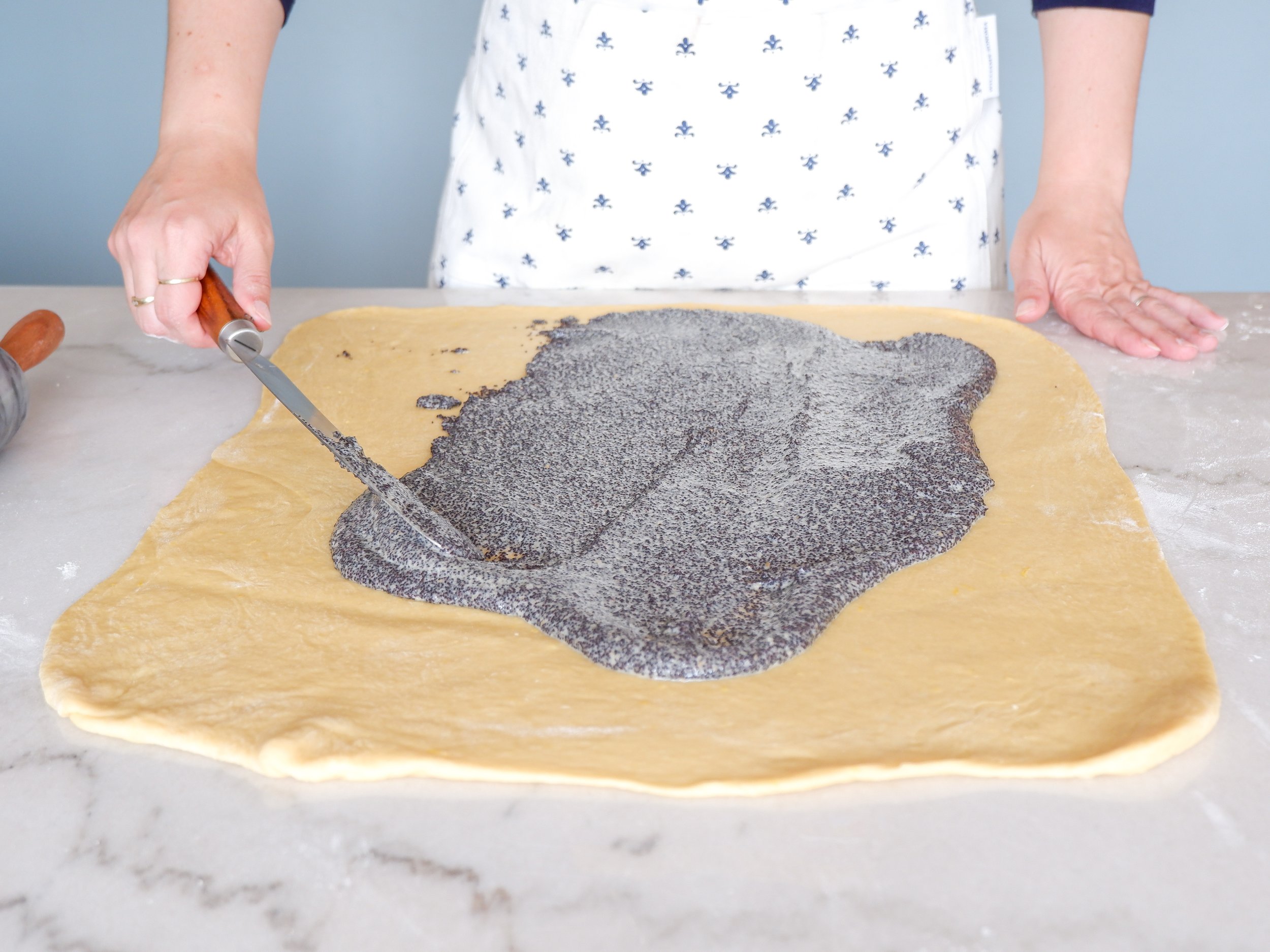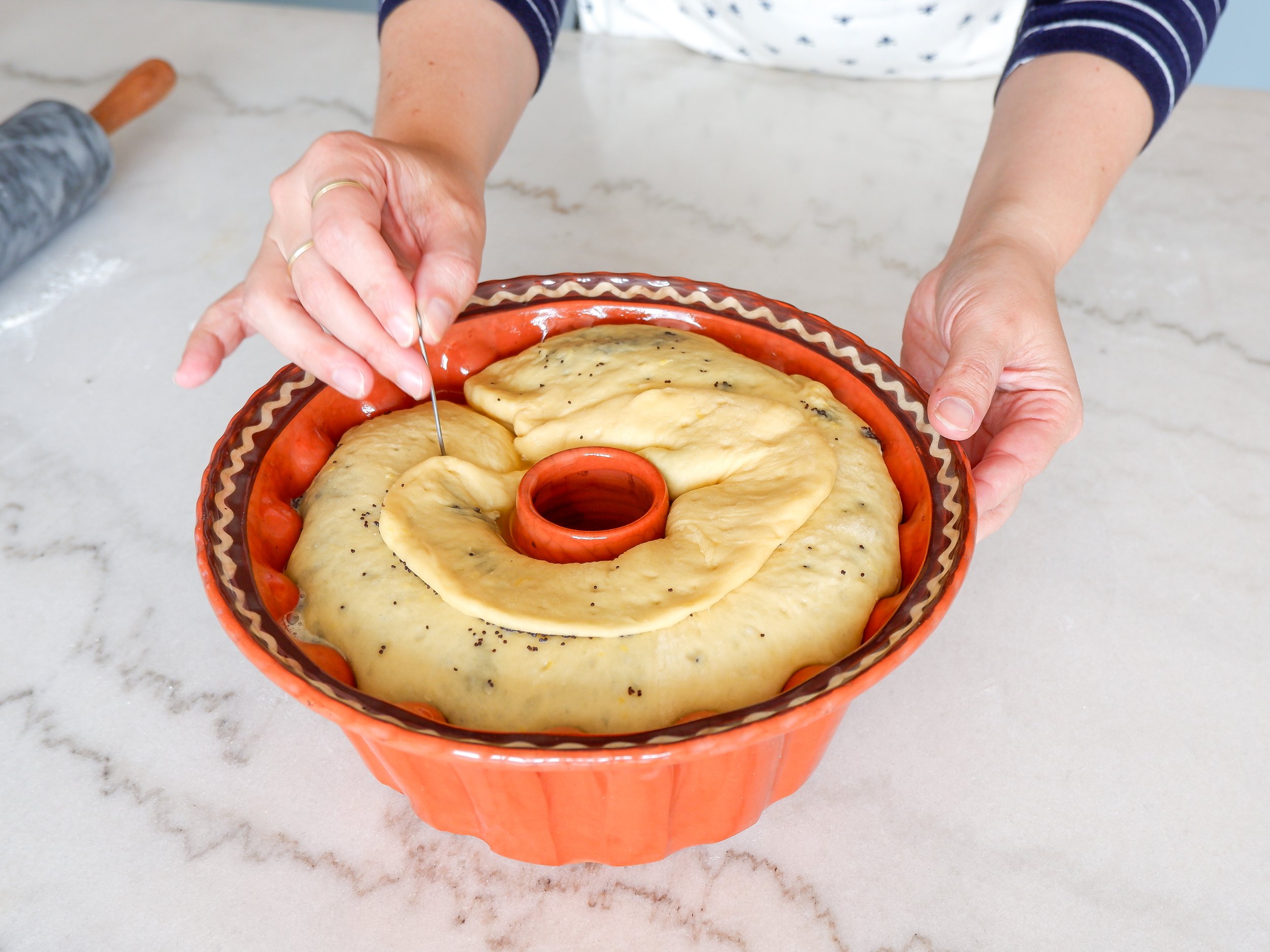Marzipan Potica
Marzipan is a sweet and nutty confection that appears in many European pastries and cakes, such as the German Christmas stollen. It can also be molded into a wide range of shapes and designs, for example fruit or New Year's pigs. In the recipe below it is used to make a filling for a traditional Slovenian dessert, potica.
It is not entirely clear where the word marzipan originated. According to Partridge's Origins it could be derived from Arabic mauthaban, which means ‘king who sits still.' The Arabic word latinized as matapanus was used to describe a Venetian coin depicting an enthroned Christ the King. These coins were stored in ornate boxes. From about the fifteenth century, when the coins were no longer in circulation, the boxes became decorative containers for storing and serving luxury sweets, one of them being marzipan, named after the box in which it was stored.
Around the 10th century, marzipan came to Sicily and Spain, brought by Arab and Jewish traders from the Middle East along with cane sugar. Toledo in Spain is famous for Mazapán to this day, whereas visitors to Sicily still get to enjoy the colorful, extremely sweet miniatures from Pasta Reale that feature fruits, vegetables, animals and much more.
Marzipan entered the rest of Europe via Venice - at that time an important port for trade with the Middle East. For a long time, this expensive delicacy was reserved for the tables of the rich and wealthy. When sugar cane began to be grown on a large scale in America, sugar became more readily available in Europe and marzipan production boomed.
In many European countries there is still a tradition of enjoying marzipan treats around Christmas —most likely this is the case since almonds were very expensive in the past and most people couldn’t afford them on a casual basis, relegating marzipan to a treat for special occasions. And there was no occasion more special in Medieval Europe than Christmas.
Recipe
Ingredients for a potica baked in a potičnik of diameter around 24 cm:
Dough
400 g flour
7 g instant yeast
80 g butter
60 g sugar
2 egg yolks
170 ml warm milk
1 tbsp rum
zest of 1 lemon
1 tsp vanilla paste (can be substituted with vanilla essence)
a pinch of salt
1 egg for the egg wash
Filling
300 g almond flour
180 g powdered sugar
2 tsp pure almond extract
1 tsp rose water
2 eggs + 2 egg whites
Instructions:
Dough
In a bowl, combine flour and yeast.
Heat the milk, sugar, and butter in a sauce pan until butter is melted.
Add lemon zest, rum and vanilla to the milk mixture and stir well.
Once the milk mixture is sufficiently cool, add 2 egg yolks and mix.
Add the milk mixture to the flour mixture and knead by hand or using a mixer until the dough is soft and elastic. It should not stick to your hands. Cover with plastic wrap and let rest in a warm place until the dough has doubled in size (about 60 minutes).
Filling
For the filling, place almond flour, powdered sugar, almond extract, 2 eggs and rose water to food processor and blend until smooth.
Beat the egg whites to stiff peaks. Slowly fold the whipped egg whites into the marzipan mixture. The filling should not be runny. If it seems too runny, stop adding egg whites.
Making potica
Heat the oven to 180C (360 F). Traditionally, potica is baked in a ceramic pan called potičnica. If you have it, fill it up with water and place it into the oven until the water is boiling (this way potica does not dry up too much during baking). If you do not have it, you can use a bundt cake pan. Butter potičnica or a standard bundt cake pan well.
Dust the working area with flour. I usually roll out the dough on a tablecloth so it does not cool down too much during rolling.
Roll the dough into a 40 cm x 35 cm rectangle (depending on the size of your pan) about 0.5 cm thick. Spread the marzipan-filling in an even layer over the dough.
The pictures depict the steps in the preparation of poppy seed potica. They are the same in the case of marzipan potica, only the filling looks different.
- Roll up the dough by hand, stretching it slightly with each roll. Seal the ends securely by gently pulling dough down to cover ends.
- Transfer the potica roll to the prepared pan so that the seam is looking upward (this way it will not be visible once potica is taken out of the pan).
- Prick the potica with a toothpick to eliminate air pockets and let rise in a warm place for about 30 minutes.
- Gently brush the potica with an egg wash.
- Bake for an hour. After 30 minutes cover the potica with aluminum foil, so that the top won't brown too much.
- Leave potica in the mold to cool down before taking it out.
- Sprinkle with powdered sugar and serve!






